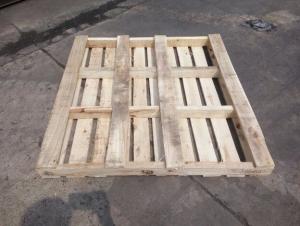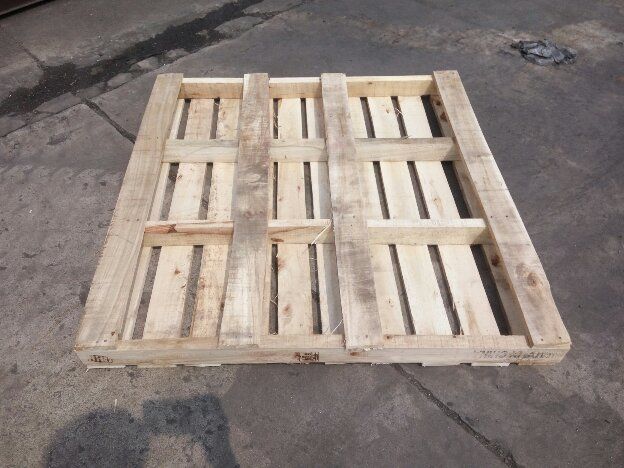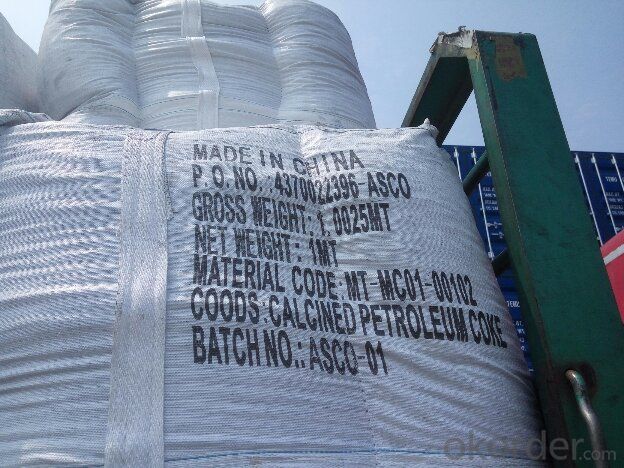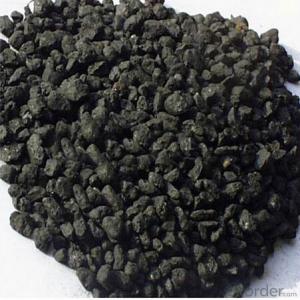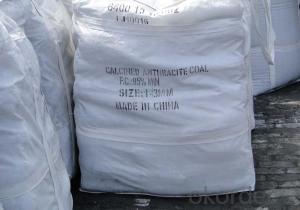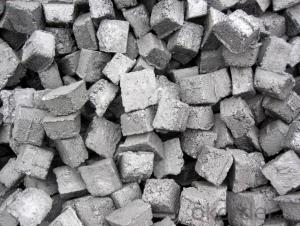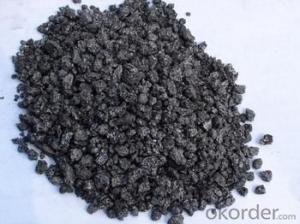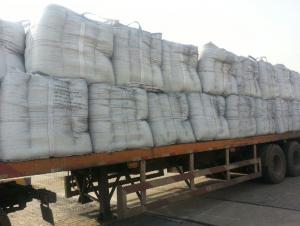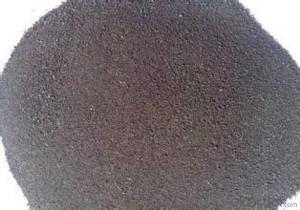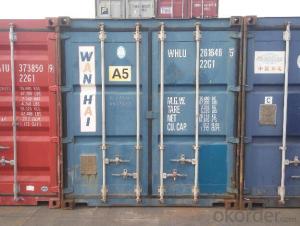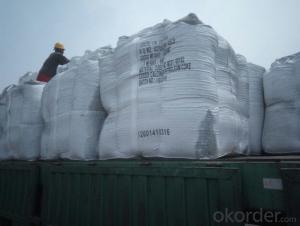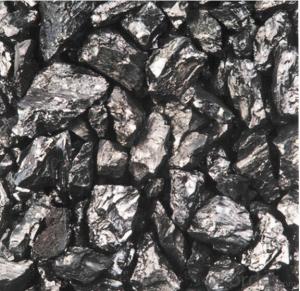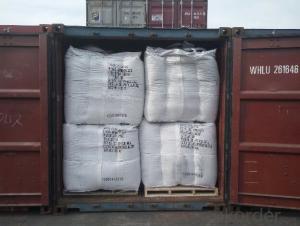Calcined Petroleum Coke as Injection Coke called CPC
- Loading Port:
- Tianjin
- Payment Terms:
- TT OR LC
- Min Order Qty:
- 20.7
- Supply Capability:
- 1017 m.t./month
OKorder Service Pledge
OKorder Financial Service
You Might Also Like
Intrduction
Carbon additive to ningxia production of anthracite as raw material, after washing, crushing, high temperature calcination, filter, etc. Craft refined and become.This is after the anthracite calcination generated high carbon content and low volatile component of the new product, is an ideal raw material to make steel.
Calcined Petroleum Coke comes from delayed coke which extracted from oil refinery. Although Calcined Petroleum Coke contains a little bit higher level of sulfur and nitrogen than pitch coke, the price advantage still makes it widely used during steel-making and founding as a kind of carbon additive/carburant.
Features
In the smelting process for reducing agent. Performance: replace the traditional oil carbon additive, decrease the cost of steelmaking. Features: low ash. low sulfur,low phosphorus, high calorific value. High ratio resistance,high mechanical strength,high chemistry activity. It is mainly used for metallurgy reductant inoculants, casting, refractory materials, machinery, electronics and other fields.Good quality
1) high absorption rate, it can be absorbed up to 90%.
2) absorbed more quickly than other carbon additive; no residue remains in furnace.
3) low Sulfur, the lowest can reach below 0.20%; low nitrogen, normally below 200ppm (0.02%)
Specifications
CPC | |||
F.C.% | 98.5MIN | 98.5MIN | 98MIN |
ASH % | 0.8MAX | 0.8MAX | 1MAX |
V.M.% | 0.7 MAX | 0.7 MAX | 1 MAX |
SULFUR % | 0. 5MAX | 0. 7MAX | 1MAX |
MOISTURE % | 0.5MAX | 0.5MAX | 1MAX |
Pictures
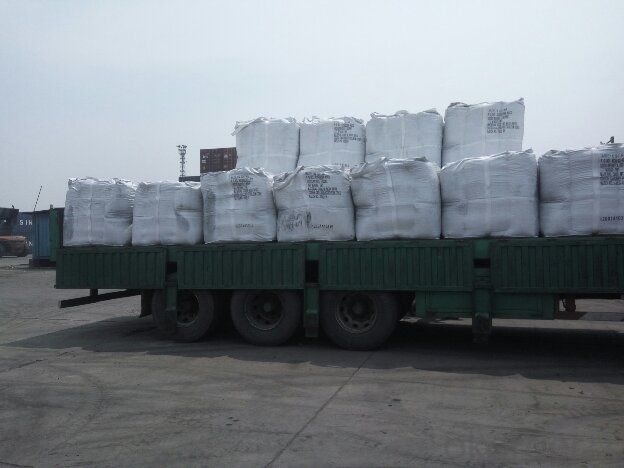
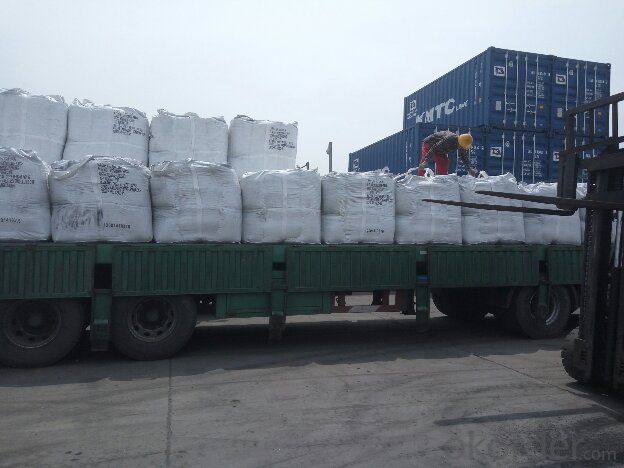
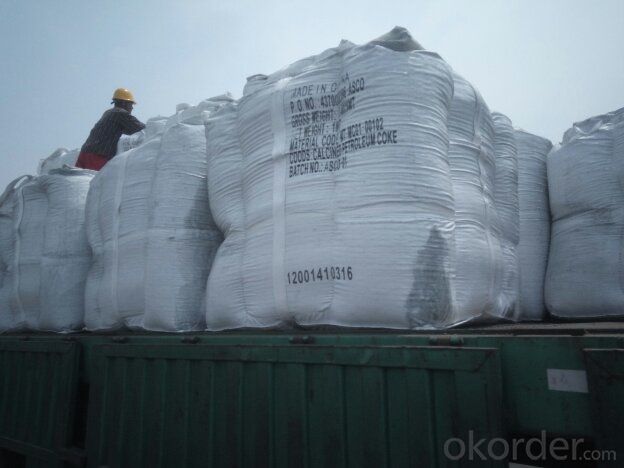
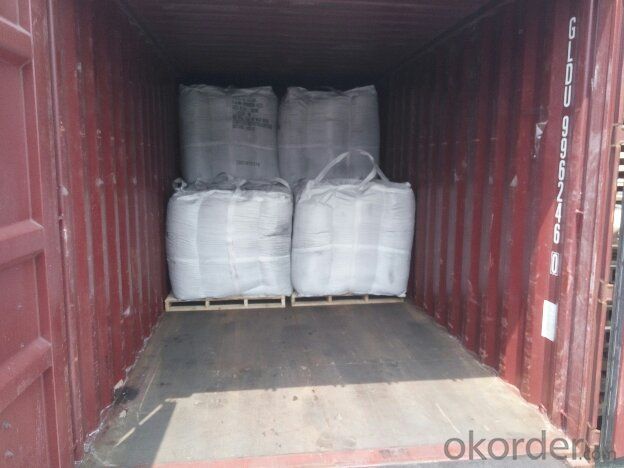
FAQ:
(1)CPC could be as fuel
Petroleum coke is a material relatively low in cost and high in heat value and carbon content with good chemical stability, making it an efficient and costeffective fuel for producing metal, brick and related products.
(2)CPC could be as Graphite Electrodes
Graphite can be produced from lowsulfur needle petroleum coke, which must be heated above 5,432 degrees Fahrenheit.
(3)CPC could be as Anodes
Calcined petroleum coke, often low in sulfur and metallic impurities, is used to make anodes for
the smelting industry.Calcined petroleum coke is mixed with coal tar pitch in the production of
anodes.
- Q: What are carbon credits and how do they work?
- Carbon credits are a market mechanism designed to reduce greenhouse gas emissions. They work by assigning a monetary value to each ton of carbon dioxide or other greenhouse gases that are not released into the atmosphere. This value is assigned through a process called carbon offsetting, which involves investments in projects that reduce emissions, such as renewable energy projects or reforestation initiatives. These projects generate carbon credits, which can be bought and sold by companies or individuals to offset their own emissions. By purchasing carbon credits, entities can effectively compensate for their own carbon footprint and contribute to global efforts in mitigating climate change.
- Q: What are the effects of carbon emissions on the stability of volcanic regions?
- Carbon emissions can potentially have both positive and negative effects on the stability of volcanic regions. On one hand, increased carbon dioxide levels in the atmosphere can contribute to global warming, which in turn may lead to melting of glaciers and ice caps, resulting in a rise in sea level. This rise in sea level can increase the likelihood of volcanic flank collapse, as the added pressure weakens the stability of volcanic slopes. Additionally, global warming can also trigger more frequent and intense rainfall, potentially leading to increased erosion and landslides in volcanic areas. On the other hand, carbon dioxide emissions can also have a stabilizing effect on volcanic regions. The injection of carbon dioxide into volcanic systems can enhance the pressure within magma chambers, promoting magma crystallization and solidification. This process can reduce the likelihood of volcanic eruptions, as the solidified magma acts as a barrier that hinders the movement and release of magma. Overall, the effects of carbon emissions on the stability of volcanic regions are complex and dependent on various factors. It is crucial to continue studying these interactions to better understand the potential consequences and implications for volcanic hazards and the overall stability of volcanic regions.
- Q: Joint carbide gas incident
- After a lapse of 25 years, a India District Court on 1984 Bhopal gas leak to be long in coming judgment, Union Carbide (India) Co., Ltd. 7 India nationals day was held for negligence causing death, they will face up to two years in prison. On the same day, hundreds of survivors, family members and environmentalists gathered around the courthouse to protest the court's decision that the perpetrators of the worst industrial disaster in twentieth Century were too light and too late. In 1969, Union Carbine Co established a Union Carbide in central India state of Bhopal Beijiao city (India) Co. Ltd., specializing in the production of aldicarb, carbaryl pesticide drops. The chemicals used in these products is called a methyl isocyanate poisonous gas. The early morning of December 3, 1984, this factory storage explosive liquid methyl isocyanate the steel tank, 45 tons of poison gas leak quickly, directly killed more than 1.5 people, allegedly have caused more than 550 thousand people died and chemical poisoning related lung cancer, renal failure and liver disease.
- Q: How does carbon impact the stability of ecosystems?
- Ecosystem stability heavily relies on the presence of carbon, an indispensable element. Carbon exerts various influences on ecosystems, both directly and indirectly. To begin with, carbon serves as a vital constituent of all living organisms. It plays a pivotal role in the formation of organic compounds like carbohydrates, proteins, and lipids, which are essential for the growth and development of plants and animals. Through the process of photosynthesis, carbon dioxide is converted into glucose by plants, providing organisms with energy. This energy is then transferred through the food chain, sustaining the entire ecosystem. Consequently, the availability of carbon directly affects the productivity and stability of ecosystems. Additionally, carbon dioxide (CO2), a greenhouse gas naturally existing in the Earth's atmosphere, plays a crucial part in regulating the planet's temperature by trapping heat and preventing its escape into space. However, human activities, notably the combustion of fossil fuels, have substantially elevated the concentration of CO2 in the atmosphere, resulting in global warming. This rapid increase in carbon emissions has led to climate change, which poses severe repercussions for ecosystems. Climate change manifests various impacts on ecosystems. As temperatures rise, the distribution and behavior of species are altered, causing changes in their habitats and migration patterns. Consequently, some species may face challenges in adapting, disrupting predator-prey relationships and overall biodiversity within ecosystems. Moreover, climate change can trigger extreme weather events such as hurricanes, droughts, and floods, which can devastate ecosystems. These events disturb resource availability, destroy habitats, and even contribute to the extinction of certain species. Furthermore, heightened levels of carbon dioxide in the atmosphere have resulted in ocean acidification. When CO2 dissolves in seawater, it creates carbonic acid, reducing the ocean's pH level. This acidification negatively impacts marine organisms such as corals, shellfish, and other calcium carbonate-dependent organisms. The diminished availability of carbonate ions in the ocean hampers the formation and maintenance of their structures, ultimately affecting the stability of marine ecosystems. In conclusion, carbon significantly influences ecosystem stability. Its availability and concentration directly impact productivity and energy flow within ecosystems. Moreover, human-induced carbon emissions have triggered climate change and ocean acidification, posing substantial threats to ecosystem balance and functioning. Therefore, comprehending and managing carbon levels in the environment is crucial for preserving the stability and sustainability of ecosystems.
- Q: What is carbon black filler?
- Carbon black filler, a commonly utilized additive in the production of rubber and plastic products, is derived from the incomplete combustion of hydrocarbons, such as oil or natural gas. It takes the form of a fine, powdery substance and is primarily composed of elemental carbon, with trace amounts of hydrogen, oxygen, and sulfur. The primary objective of incorporating carbon black filler is to enhance the physical characteristics of rubber and plastic materials. Its addition improves the strength, durability, and wear resistance of the final product. Furthermore, carbon black filler increases the material's stiffness and hardness, making it suitable for various applications. Beyond its mechanical properties, carbon black filler offers additional advantages. It acts as a reinforcing agent, augmenting the tensile strength and tear resistance of rubber compounds. Additionally, it heightens the material's electrical conductivity, proving valuable in scenarios where static electricity dissipation is necessary. Moreover, carbon black filler safeguards the material against the detrimental effects of UV radiation and ozone. It serves as a UV stabilizer and antioxidant, preventing degradation and extending the product's lifespan. Furthermore, carbon black filler enhances the thermal conductivity of rubber and plastic materials, facilitating heat dissipation. Overall, carbon black filler is a versatile and extensively employed additive in the manufacturing industry. Its distinctive attributes render it an indispensable component in the production of various rubber and plastic products, including tires, conveyor belts, hoses, gaskets, among others.
- Q: What are the effects of carbon emissions on the stability of coastal ecosystems?
- Carbon emissions have significant effects on the stability of coastal ecosystems. One of the primary consequences is ocean acidification, which occurs when excess carbon dioxide dissolves in seawater and lowers its pH. This acidification has detrimental effects on various marine organisms, particularly those that rely on calcium carbonate to build their shells, such as corals, oysters, and some types of plankton. As the water becomes more acidic, it becomes harder for these organisms to form and maintain their protective structures, leading to reduced growth rates, weakened shells, and increased vulnerability to predation and disease. Furthermore, carbon emissions contribute to global warming, resulting in rising sea levels and increased storm intensity. Coastal ecosystems, such as mangroves, salt marshes, and seagrass beds, act as buffers against storm surges and provide crucial habitat for many species. However, with rising sea levels, these ecosystems are at risk of being submerged, leading to the loss of their protective functions and the displacement of numerous plant and animal species. Additionally, climate change caused by carbon emissions alters ocean currents and disrupts the balance of nutrients in coastal waters. This can lead to changes in the distribution and abundance of marine species, affecting the entire food web. For instance, if certain species that serve as a food source or a predator are negatively impacted, it can cause a ripple effect throughout the ecosystem. Such disruptions can lead to reduced biodiversity, loss of key species, and ultimately, the collapse of entire coastal ecosystems. Overall, carbon emissions have far-reaching and detrimental effects on the stability of coastal ecosystems. It is crucial to reduce carbon emissions and mitigate the impacts of climate change to protect these fragile ecosystems and the countless species that depend on them.
- Q: How is carbon used in the production of pigments?
- The ability of carbon to create vibrant and deep colors makes it a common choice for pigments. These pigments, also known as carbon blacks, are produced by incomplete combustion of hydrocarbons like natural gas or petroleum. The resulting carbon particles are then processed and purified to create a fine powder that serves as a pigment. Various industries, including inks, paints, plastics, and cosmetics, utilize these carbon-based pigments. In the ink production process, carbon black is frequently added to enhance color intensity and opacity. Similarly, in the manufacturing of paints and coatings, it is used to provide a rich and deep black color. Plastics can be enhanced by adding carbon black, which improves their UV resistance, making them more durable and long-lasting. This is especially crucial for outdoor applications where exposure to sunlight can lead to fading and degradation. Carbon-based pigments are also widely used in the cosmetics industry. They are incorporated into products like eyeliners, mascaras, and lipsticks to create intense black or dark shades. The stability and consistent color delivery of carbon black pigments make them a preferred choice in cosmetics. In summary, the ability of carbon to create vibrant and deep colors makes it extensively used in pigment production. Carbon-based pigments have diverse applications in various industries, enhancing color intensity, providing UV resistance, and delivering rich black shades.
- Q: I bought a grill myself and went to barbecue with my friends the day after tomorrow, but I can't ignite the carbon. What should I do?
- Solution 1: the most traditionalTake paper and other ignition, put the following, carbon placed on the top, ignition paper charcoal ignition, pay attention to charcoal do not put too much, easy to put pressure on the fire out, paper ignition may be a little larger.Solution 2: save troubleThe carbon code, to Erguotou pouring point below the carbon, then lit on OK.Solution 3: the most technical contentMake a fire by the side; burn the charcoal red and then put it in the oven.Solution 4: laziestThere are other people around here to barbecue, to have some ready-made kindling, and politely change it with carbon.Solution 5: the most technologyBuy carbon crystals and ignite with carbon crystals. Carbon is divided into three categories, one is carbon powder and igniting agent, also called charcoal is a plus; alcohol and other ingredients do, also called solid alcohol; the other is paraffin with sawdust, called carbon, smokeless tasteless, easy to ignite. Carbon is mainly used as Hot pot barbecue, combustion. The correct way is to use the two to three grains of carbon on the stove, the fire when the fire ignited, and then the charcoal frame at the top, the use of carbon combustion heat ignited charcoal. That is, the heat is up to go, put on the above carbon charcoal burning, it must be difficult to ignite charcoal.
- Q: What is the concept of carbon neutrality?
- Carbon neutrality is the idea that an entity, whether it be an individual, organization, or even a whole country, has achieved a balance between the amount of carbon dioxide emissions they produce and the amount they offset or remove from the atmosphere. It is essentially a state where the net carbon emissions are zero, indicating that the entity is not contributing to the increase in greenhouse gases and climate change. Achieving carbon neutrality often involves reducing emissions through sustainable practices and technologies, as well as investing in carbon offset projects or utilizing carbon capture and storage methods.
- Q: How does carbon impact the availability of sustainable development policies?
- Carbon impacts the availability of sustainable development policies by directly contributing to climate change. The excessive emission of carbon dioxide and other greenhouse gases from human activities leads to global warming, which in turn affects natural resources, ecosystems, and communities. To mitigate the negative impacts of carbon, sustainable development policies aim to reduce carbon emissions, promote renewable energy sources, and encourage sustainable practices. By addressing carbon emissions, these policies help create a more sustainable future by preserving resources, minimizing environmental degradation, and fostering social and economic well-being.
Send your message to us
Calcined Petroleum Coke as Injection Coke called CPC
- Loading Port:
- Tianjin
- Payment Terms:
- TT OR LC
- Min Order Qty:
- 20.7
- Supply Capability:
- 1017 m.t./month
OKorder Service Pledge
OKorder Financial Service
Similar products
Hot products
Hot Searches
Related keywords
